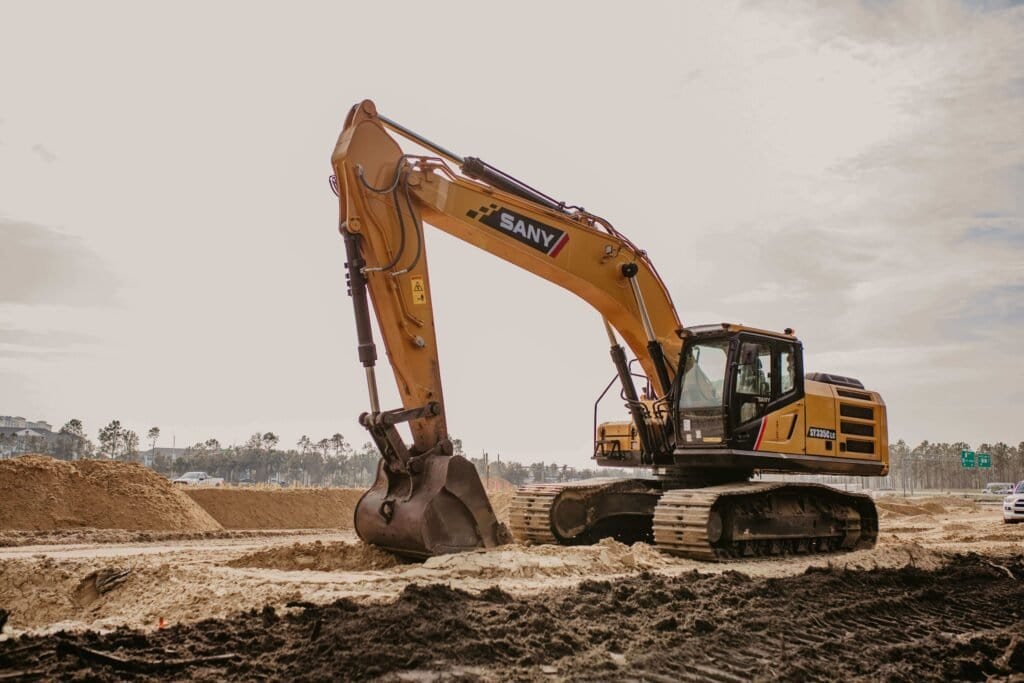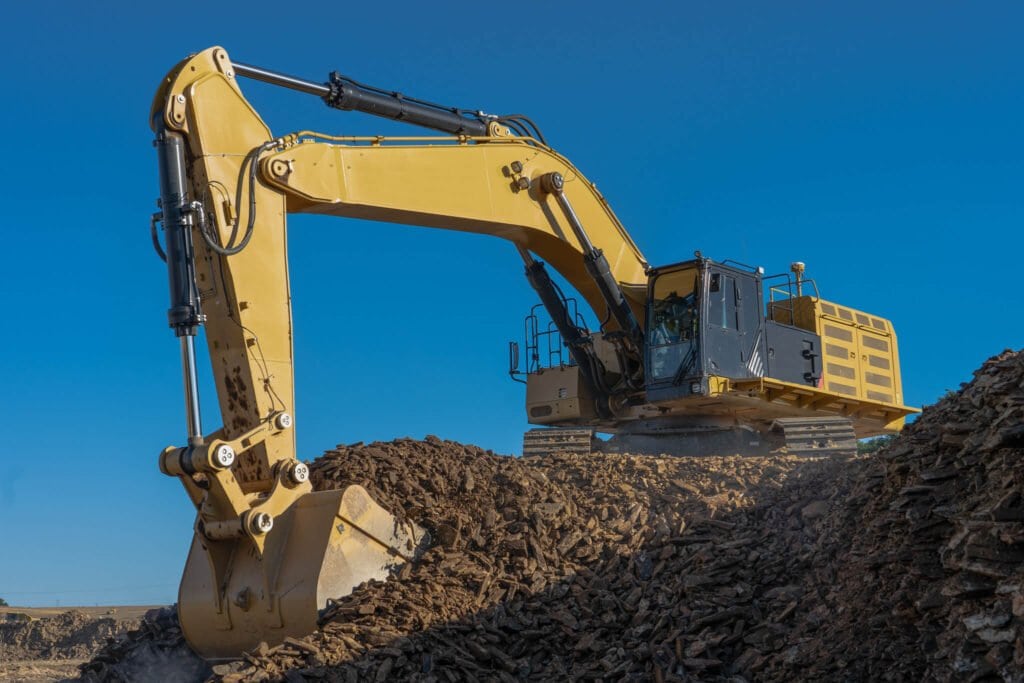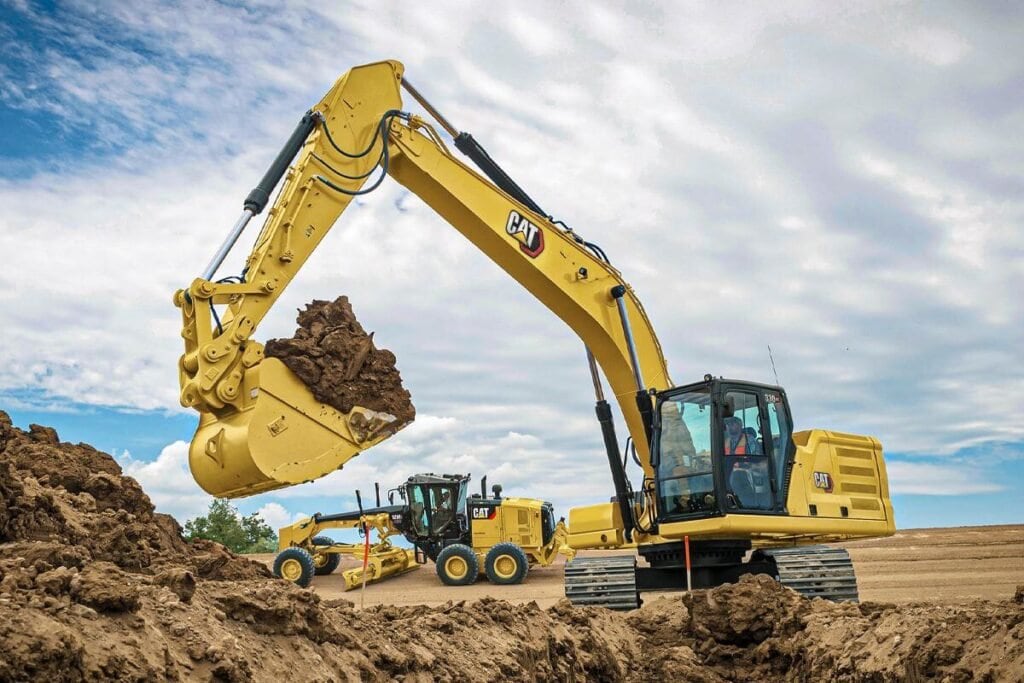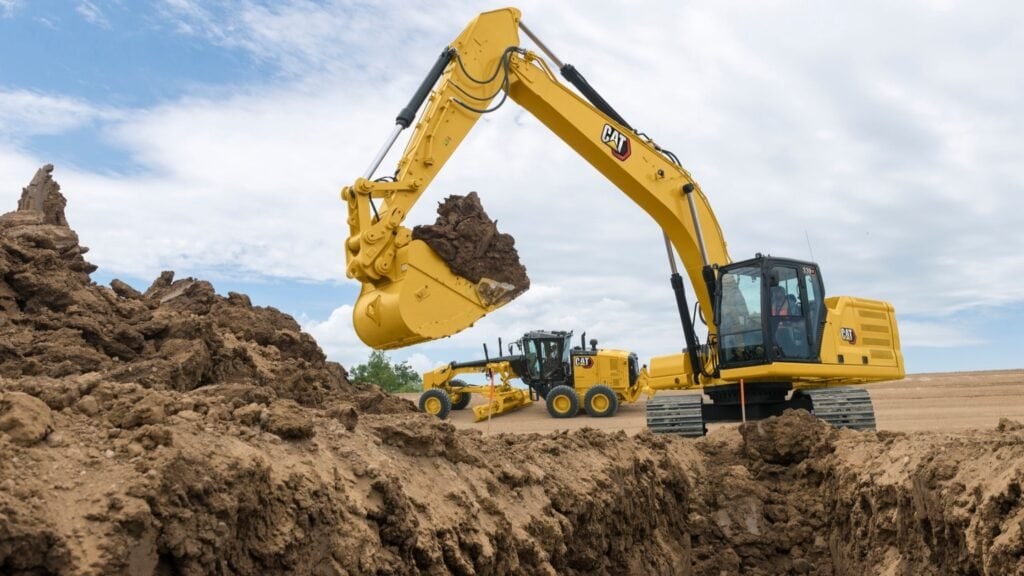Trenching with an excavator appears simple, yet neglecting dangers results in accidents and delays. Many ventures fail in this manner. Let’s look at how to securely dig an excavator trench.
To dig an excavador trench safely, inspect soil, locate utilities, use trench boxes, and follow safety laws. Select the right excavator size for depth, ensure stable excavator tracks, and communicate with your crew. Reliable planning prevents cave-ins and keeps projects on schedule.
Now, let’s go over the key procedures and ideas for trenching with excavators in a safer, more efficient manner.

Why Is Soil Analysis Important Before Digging An Excavator Trench?
Soil stability is the cornerstone of trench safety. Many mishaps happen because operators misjudge ground conditions and assume that every site is the same. In fact, the kind of soil can make the difference between a stable and a collapsed trench. Understanding soil is the first step for every operator, whether they work with a CAT excavator, a Komatsu excavator, or a tiny mini excavator.
Proper soil analysis is critical because it dictates trenching technique, equipment selection, and protection measures. Trench boxes are frequently required for sandy soil, but clay soil may remain stable for extended periods of time.
To clarify, OSHA categorizes soils as Type A, B, or C depending on cohesion and stability. Type A, like clay, retains better, but Type C, like gravel, is extremely unstable. This categorization helps operators choose whether to slope, shore, or shelter the trench. Without soil analysis, even the most modern hydraulic excavator or dragline excavator becomes risky.
Soil analysis has an impact on your machine choice. For example, a 13-tonne excavator can handle stable clay trenches with minimum reinforcing, but sandy conditions may necessitate a larger cat 323f price range machine with sophisticated safety measures. Soil inspections are especially necessary when renting a mini excavator since smaller machines, such as the Kubota mini excavator or Hitachi mini excavator, lack the physical power required to settle loose soil.
Buyers comparing excavators for sale—whether it’s a cat 315 for sale, a cat 330 excavator for sale, or even a Liebherr excavator—should always ask for soil suitability information in manuals. Soil is more than simply soil; it is a protective component that may save lives.

What Equipment Ensures Safety When Excavator Trench?
An excavator equipment is strong, but power alone does not ensure safety. The proper trench protection equipment avoids collapses and worker casualties. Using safety equipment, from trench boxes to shoring systems, is just as critical as selecting the appropriate excavator size guide. Trench boxes, shoring, and sloping methods are all essential safety devices for keeping trench walls stable and operators safe.
Trench boxes are steel or aluminum barriers that keep workers safe within a trench. They are essential for operating large machinery such as a Cat 390 long reach, Volvo excavator, or even a railroad digger, which dig deeper and riskier trenches. In contrast, shoring reinforces trench walls with hydraulic or timber supports, whereas sloping removes dirt at a safe angle.
Communication equipment is another commonly ignored safety essential. Excavator operators, whether seeking excavator employment or managing teams, must maintain continual touch with people within trenches. Even the most modern mecalac excavators or case excavators cannot compensate for inadequate communication.
Protective gear also includes personal equipment. In restricted places, workers should wear helmets, luminous clothes, and employ gas detectors. Never skimp on safety equipment when renting a small excavator—it’s less expensive than litigation or accidents.
Even advanced manufacturers, such as sany excavator, cat 308d for sale, and jcb mini excavator for sale, warn customers that their equipment are only as secure as the setup. When calculating the cost of a new excavator or small excavator, consider trench safety gear. The top excavator manufacturers can dig, but only proper planning assures that no one is injured.

How Do You Choose The Right Excavator Size For Trenching Work?
Choosing the incorrect excavator size wastes fuel, time, and jeopardizes safety. Trenching necessitates matching machine size to project depth, width, and site limitations. The optimal excavator size strikes a compromise between digging depth, trench breadth, and jobsite mobility. Smaller machines are better suited to small ditches, whilst larger excavators can manage deeper, broader cuttings.
For small-scale jobs like as residential utilities, a tiny excavator or compact excavator is ideal. Models like the sany mini excavator, cat mini excavator, and bobcat mini excavator are best for excavating 7-10 feet. If cost is an issue, looking into mini excavator rental rates or used mini excavators for sale by owner will help save money.
For mid-range tasks, a cat 320 excavator for sale or a cat 315 excavator for sale can dig deeper holes up to 22 feet. These machines combine power and mobility, making them ideal for contractors. Heavy operations, such as pipeline construction, need machines like the Cat 390f specifications or Cat 390 long reach, which can dig more than 25 feet deep.
Operators must also consider site size. A compact micro digger fits into narrow urban places but has limited reach, whereas a trackhoe with a longer excavator track performs well on open grounds. Before purchasing, always compare excavator vs backhoe. Backhoes may be versatile for mixed duties, but specialized excavators provide greater trench depth and control.
Buyers studying excavator kinds or viewing excavators for sale—from Kubota small excavators for sale to Cat 330 excavators for sale—must evaluate machine specs. When budgeting, keep the cat 323f and cat 320f prices in mind, as well as the sizes of case excavators. A decent excavator size recommendation guarantees that you never pay for more machine than you require.

How Far Down Can An Excavator Dig?
Every excavator definition includes digging depth, yet many customers forget this fact. Depth capability varies by model and size. Standard excavators dig 10-15 feet deep, mid-sized versions like the CAT320D reach 20-22 feet, and huge units like the CAT390 dig more than 25 feet.
Mini and compact variants, such as the temu mini excavator, chinese mini excavator, or walk-behind micro excavator, may dig 7-10 feet. They are ideal for utility lines, landscaping, and minor residential jobs. If you’re looking for a low-cost trenching solution, check the prices of new and used mini excavators, as well as mini excavators from Kubota.
For medium-sized tasks, machines like as the Cat 308 excavator or Cat 308d for sale may reach 15-22 feet. These are ideal for contractors that need to work on both residential and commercial projects. Larger projects, like as mine or rail installations, may necessitate the use of a mining excavator, a cat 390 extended reach, or even a dragline excavator for extreme depths.
The depth of an excavator has an impact on its cost. Although a little excavator rental is inexpensive on a daily basis, significant trenching may necessitate bigger machines, raising excavator rental costs. Buyers should evaluate the following categories: tiny excavators for sale, compact excavators for sale, and heavy-duty cat 330 excavators for sale.
Depth also affects operator jobs. For individuals looking for excavator operator positions, understanding different digging limits is critical. Whether utilizing a Kubota mini excavator, a Volvo excavator, or a Sany excavator, knowing your limits guarantees efficient and safe trenching.

What Common Mistakes Should Be Avoided In Excavator Trench?
Even expert workers using the latest construction digger equipment make blunders. Avoiding them saves money and helps to prevent accidents. Common mistakes include neglecting soil analysis, bypassing safety equipment, harming subterranean utilities, and utilizing the incorrect excavator size for the task.
One typical error is underestimating the soil. Operators frequently imagine that a little mini excavator for sale can dig anyplace. However, without soil tests, even a cat micro excavator for sale runs the risk of trench collapse. Another error is failing to provide safety equipment—using an excavator cat without trench boxes is unsafe.
Another costly error is causing damage to subsurface wires or pipelines. Operators of track hoe or cat 308 excavators must constantly consult utility maps. Striking water or gas lines causes project delays and penalties.
Size mismatch is another trap. A contractor may purchase a cat 315 for sale if the task requires a cat 390f specifications machine. In contrast, deploying a massive excavator Komatsu on a tiny site wastes fuel and space. Use an excavator size guide to avoid mismatches.
Finally, poor planning and delayed logistics may derail projects. Even if you’ve selected the greatest excavator brand or best excavator for the money, neglecting to organize transportation or parts might be costly during high sales seasons. Many used excavators for sale by owner appear appealing; nevertheless, before making a purchase, confirm certification, inspection, and after-sales assistance.

Summary
Trench safety necessitates careful planning, soil testing, and the use of the appropriate excavators. For effective, risk-free excavation jobs, avoid errors, employ safety measures, and select appropriate machinery.